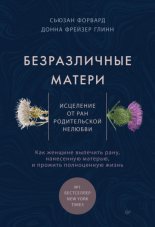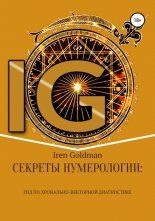Ñòàìáóë. Ñêàçêà î òðåõ ãîðîäàõ Õüþç Áåòòàíè

Meyer, M. (2011) ‘Refracting Christian Truths through the Prism of the Biblical Female in Byzantine Illuminated Manuscripts’, in R. Bonfil, O. Irshai, G. G. Stroumsa and R. Talgam (eds) Jews in Byzantium: Dialectics of Minority and Majority Cultures. Leiden: Brill, 969–98.
Mgaloblishvili, T. and Gagoshidze, I. (1998) ‘The Jewish Diaspora and Early Christianity in Georgia’, in T. Mgaloblishvili (ed.) Ancient Christianity in the Caucasus. Richmond: Curzon Press, 39–48.
Miller, S. (2008) Vienna 1683: Christian Europe Repels the Ottomans. Oxford and New York: Osprey Publishing.
Miller, W. (2013) The Ottoman Empire and its Successors 1801–1927: With an Appendix 1927–1936, 4th edn. Cambridge: Cambridge University Press.
Milton, G. (2008) Paradise Lost: Smyrna, 1922. The Destruction of Islam’s City of Tolerance. London: Sceptre.
Miraj, L. F. (2013) Dyrrachium in the Early Christian and Byzantine Period. Tirana: n.p.
Mitchell, J. (2008) The Butrint Baptistery and its Mosaics. London and Tirana: Butrint Foundation.
Mitchell, P. (2011) ‘Post-Medieval Archaeology in Vienna’, in Proceedings of Workshop 15, International Conference on Cultural Heritage and New Technologies, 15–17 November 2010, Vienna, 20–31.
Mitchell, P. (2013) ‘The Architecture of Absolutism’, in N. Mehler (ed.) Historical Archaeology in Central Europe, Society for Historical Archaeology Special Publication 10. Rockville, MD, 365–378.
Moberly, F. (1923) History of the Great War Based on Official Documents: The Campaign in Mesopotamia 1914–1918, vol. 1. London: HMSO, 130–1.
Montagu, Lady Mary Wortley (2013) The Turkish Embassy Letters, ed. T. Heffernan and D. O’Quinn. Ontario: Broadview Press.
Montefiore, S. S. (2011a) Jerusalem: The Biography. London: Weidenfeld & Nicolson.
Montefiore, S. S. (2011b) Catherine the Great & Potemkin: The Imperial Love Affair. London: Weidenfeld & Nicolson.
Montefiore, S. S. (2016) The Romanovs: 1613–1918. London: Weidenfeld & Nicolson.
Moorhead, J. (1978) ‘Boethius and Romans in Ostrogothic Service’, Historia: Zeitschrift fr Alte Geschichte 27.4: 604–612.
Moorhead, S. and Stuttard, D. (2010) AD 410: The Year that Shook Rome. London: The British Museum Press.
Moreno, A. (2008) ‘Hieron: The Ancient Sanctuary at the Mouth of the Black Sea’, Hesperia: The Journal of the American School of Classical Studies at Athens 77.4: 655–709.
Morrisson, C. and Sodini, J.-P. (2002) ‘The Sixth-Century Economy’, in A. E. Laiou (ed.) The Economic History of Byzantium: From the Seventh through the Fifteenth Century. Washington, DC: Dumbarton Oaks Research Library and Collection.
Mourad, K. (1994), Living in Istanbul, with photographs by J. Darbly. Paris: Flammarion.
Mowafi, R. (1981) Slavery, Slave Trade and Abolition Attempts in Egypt and the Sudan 1820–1882. Lund Studies in International History 14. Lund: Scandinavian University Books.
Mundell Mango, M. (2000) ‘The Commercial Map of Constantinople’, Dumbarton Oaks Papers 54: 189–207.
Murdoch, A. (2005) The Last Pagan: Julian the Apostate and the Death of the Ancient World. Stroud: Sutton Publishing.
Murdoch, B. and Read, M. (eds) (2004) Early Germanic Literature and Culture. Rochester, NY: Camden House.
Murphey, R. (1999) Ottoman Warfare: 1500–1700. London: UCL Press.
Muthesius, A. (1995) Studies in Byzantine and Islamic Silk Weaving. London: Pindar Press.
Muwayhili, Ibrahim al- (2008) Spies, Scandals, & Sultans: Istanbul in the Twilight of the Ottoman Empire, trans. R. Allen. Rowman & Littlefield Publishers, Inc.
Nabi Efendi (1901) ‘Eulogy of Istanbul’ in de A. P. Courteille and R. Arnot (eds and trans.) The Counsels of Nabi Efendi to his Son Aboul Khair. New York: The Colonial Press.
Necipolu, G. (1992) Architecture, Ceremonial and Power: The Topkap Palace in the Fifteenth and Sixteenth Centuries. Cambridge, MA: MIT Press.
Necipolu, G. (1993) ‘Framing the Gaze in Ottoman, Safavid and Mughal Palaces’, Pre-Modern Islamic Palaces special issue, Ars Orientalis 23: 303–342.
Necipolu, G. (2005) The Age of Sinan: Architectural Culture in the Ottoman Empire. London: Reaktion Books.
Necipolu, G. (2007) ‘Creation of a National Genius: Sinan and the Historiography of “Classical” Ottoman Architecture’, Muqarnas 24: 141–183.
Necipolu, N. (2009) Byzantium between the Ottomans and the Latins: Politics and Society in the Late Empire. Cambridge: Cambridge University Press.
Nelson, R. S. and Krueger, D. (2013) ‘The New Testament in Byzantium’, Byzantine Studies Symposium, April 26–28, University of North Carolina at Greensboro.
Der Nersessian, S. (1987) ‘Two Miracles of the Virgin in the Poems of Gautier de Coincy’, in Dumbarton Oaks Papers 41: 157–163.
Neuhusler, J. (1960) What Was It Like in the Concentration Camp at Dachau? An Attempt to Come Closer to the Truth. Munich and Dillingen: Manz A.G.
Newman, J. H. (1866) A letter to the Rev. E.B. Pusey, D.D. on his recent Eirenicon. London: Longmans, Green, Reader, and Dyer.
Nicol, D. M. (1988) Byzantium and Venice: A Study in Diplomatic and Cultural Relations. Cambridge: Cambridge University Press.
Nicolle, D. (1994) Yarmuk AD 636: The Muslim Conquest of Syria. Oxford: Osprey Publishing.
Nicolle, D. (2007) Crusader Castles in Cyprus, Greece and the Aegean 1191–1571. Oxford: Osprey Publishing.
Nienhause, W. (2011) ‘Sima Qian and the Shiji’, in Andrew Feldherr and Grant Hardy (eds) The Oxford History of Historical Writing, vol. 1: Beginnings to AD 600. Oxford: Oxford University Press. 463–484.
Nixon, C. E. V. and Saylor Rodgers, B. (1994) In Praise of Later Roman Emperors: The Panegyrici Latini. Berkeley: University of California Press.
Nixon, P. (2012) St Cuthbert of Durham. Stroud: Amberley.
Noldeke, T. (1909) Geschichte des Qorans. Leipzig: Dietrich.
Noonan, T. (1973) ‘The Grain Trade of the Northern Balkan Sea in Antiquity’, American Journal of Philology 93.3: 231–242.
Noppen, R. K. (2015) Ottoman Navy Warships 1914–18. Oxford: Osprey Publishing.
Norwich, J. J. (2007) The Middle Sea: A History of the Mediterranean. London: Vintage Books.
Oikonomides, N. (1986) ‘Silk Trade and Production in Byzantium from the Sixth to the Ninth Century: The Seals of the Kommerkiarioi’, Dumbarton Oaks Paers 40: 49–51.
Oikonomides, N. (1999) ‘L’“Unilinguisme” officiel de Constantinople byzantine (VIIe – XIIe s.)’, Byzantina Symmeikta 13: 9–22.
Olson, R. W. (1977) ‘Jews, Janissaries, Esnaf and the Revolt of 1740 in Istanbul: Social Upheaval and Political Realignment in the Ottoman Empire’, Journal of the Economic and Social History of the Orient 20.2: 185–207.
Olster, D. (1995) ‘Theodore Grammaticus and the Arab Siege of 674–8’, Byzantinoslavica 56: 23–8.
Onar, V., Pazvant, G., Gezer Ince, N., Alpak, H., Janeczek, M. and Kiziltan, Z. (2013) ‘Morphometric Analysis of the Foramen Magnum of Byzantine Dogs Excavated in Istanbul Yenikapi at the Site of Theodosius Harbour’, Mediterranean Archaeology and Archaeometry 13.1: 135–142.
Onar, V. et al. (2015) ‘Estimating the Body Weight of Byzantine Dogs from the Theodosius Harbour at Yenikapi, Istanbul’, Kafkas Universitesi Veteriner Fakultesi Dergisi 21: 55–9.
Onesti, N. F. (2013) Tracing the Language of the Vandals. University of Siena.
Oniz, H. and Aslan, E. (eds) (2011) SOMA 2009: Proceedings of the XIII Symposium on Mediterranean Archaeology, Selcuk University of Konya, Turkey 23–24 April 2009. Oxford: Archaeopress.
Orga, A. (ed.) (2007) Istanbul: A Collection of the Poetry of Place. London: Eland.
Orga, I. (2002) The Caravan Moves On: Three Weeks among Turkish Nomads. Reprint. London: Eland.
Orga, I. (2004) Portrait of a Turkish Family. Reprint. London: Eland.
Ostovik, H., Silcox, M. V. and Roebuck, G. (2008) The Mysterious and the Foreign in Early Modern England. Associated University Presses.
Ousterhout, R. (1995) ‘Temporal Structuring in the Chora Parekklesion’, Gesta 34.1: 63–76.
Ousterhout, R. (2010) ‘New Temples and New Solomons: The Rhetoric in Byzantine Architecture’, in P. Magdalino and R. Nelson (eds) The Old Testament in Byzantium. Washington, DC: Harvard University Press, 223–254.
Overy, R. (2014) History of War in 100 Battles. Oxford: Oxford University Press.
zdogan, M., Miyake, Y. and Dede, N. (1991) ‘An Interim Report on Excavations at Yarimburgaz and Toptepe in Eastern Thrace’, Anatolica 12: 59–121.
Paine, L. (2013) The Sea and Civilisation. London: Knopf.
Painter, N. I. (2003) ‘Why White People Are Called Caucasian?’, Proceedings of the Fifth Annual Gilder Lehrman Center International Conference, Yale University, 7–8 November 2003, http://glc.yale.edu/sites/default/files/files/events/race/Painter.pdf.
Painter, N. I. (2011) The History of White People. New York and London: W. W. Norton.
Pakalin, M. Z. (1971) Osmanl tarih deyimleri ve terimleri szl. Istanbul: Milli Eitim Basmevi.
Palmer, M. (2001) The Jesus Sutras: Rediscovering the Lost Scrolls of Taoist Christianity. Wellspring/Ballantine.
Pamuk, O. (2005) Istanbul. London: Faber & Faber.
Pamuk, O. (2006) The Black Book, trans. M. Freely. London: Faber & Faber.
Pamuk, O. (2010) The Museum of Innocence: A Novel. London: Faber & Faber.
Pany, D. and Wiltschke-Schrotta, K. (2008) ‘Artificial Cranial Deformation in a Migration Period Burial of Schwarzenbach, Central Austria’, VIAVIAS 2: 18–23.
Papp, A. (2011) ‘Building and Builder: Constructions under Sokollu Mustafa Pasha’s Reign in Medieval Buda’, in B. Biedronska-Slota, M. Ginter-Frolow and J. K. Malinowsku (eds) The Art of the Islamic World and the Artistic Relationships between Poland and Islamic Countries. Budapest: History Museum, 75–83.
Pardoe, J. (1838) The Beauties of the Bosphorus. London: George Virtue, 26, Ivy Lane.
Parker, P. (2014) The Northmen’s Fury: A History of the Viking World. London: Jonathan Cape.
Parsons, R. et al. (2010) ‘Gravity-Driven Flow in a Submarine Channel Bend: Direct Field Evidence of Helical Flow Reversal’, Geology 38: 1063–1066.
Patricios, N. N. (2014) The Sacred Architecture of Byzantium: Art, Liturgy and Symbolism in Early Christian Churches. London: I. B. Tauris.
Pun, R. G. (2013) ‘Enemies Within: Networks of Influence and the Military Revolts against the Ottoman Power (Moldavia and Wallachia, Sixteenth – Seventeenth Centuries)’, in G. Krmn and L. Kunevi (eds) The European Tributary States of the Ottoman Empire in the Sixteenth and Seventeenth Centuries. Leiden and Boston: Brill, 209–249.
Payne, C. (ed.) (2003) Butrinti, 1993–2003: Ten Years of Research. London: Butrint Foundation.
Peirce, L. P. (1993) The Imperial Harem: Women and Sovereignty in the Ottoman Empire. New York and Oxford: Oxford University Press.
Pekin, A. K. and Kangal, S. (2007) Istanbul: 8000 Years Brought to Daylight: Marmaray, Metro, Sultanahmet Excavations. Istanbul: Vehbi Ko Foundation.
Pelikan, J. (1987) The Excellent Empire: The Fall of Rome and the Triumph of the Church. Eugene, OR: Wipf & Stock.
Pennanen, R. P. (2004) ‘The Nationalization of Ottoman Popular Music in Greece’, Ethnomusicology 48.1: 1–25.
Pentcheva, B. V. (2007) ‘Containers of Power: Eunuchs and Reliquaries in Byzantium’, RES: Anthropology and Aesthetics 51: 108–120.
Perra, P. (2013) ‘Aspects of the Relations between the Hospitaller Knights of Rhodes and the Republic of Venice: Contacts and Collaboration during the Second Venetian – Ottoman War (1499–1502/03)’, in S. Phillips and E. Buttigieg (eds) Islands and Military Orders, c. 1291–1798. Farnham: Ashgate.
Peterkin, A. (2001) One Thousand Beards: A Cultural History of Facial Hair. Vancouver: Arsenal Pulp Press.
Philliou, C. (2008) ‘The Paradox of Perceptions: Interpreting the Ottoman Past through the National Present’, Middle Eastern Studies 44.5: 661–675.
Phillips, J. (2004) The Fourth Crusade and the Sack of Constantinople. London: Jonathan Cape.
Phillips, J. (2010) Holy Warriors: A Modern History of the Crusades. London: Vintage Books.
Phillips, W. A. (1897) The War of Greek Independence 1821–1833. London: Smith, Elder.
Phillips, W. D. (1985) Slavery from Roman Times to the Early Transatlantic Trade. Manchester: Manchester University Press.
Phillips Cohen, J. (2014) Becoming Ottomans: Sephardi Jews and Imperial Citizenship in the Modern Era. Oxford: Oxford University Press.
Pickles, T. (1998) Malta 1565: Last Battle of the Crusades. Oxford and New York: Osprey Publishing.
Pierce, L. (1993) The Imperial Harem: Women and Sovereignty in the Imperial Harem. New York; Oxford: Oxford University Press.
Pincus, D. (1992) ‘Venice and the Two Romes: Byzantium and Rome as a Double Heritage in Venetian Cultural Politics’, Artibus et Historiae 13.26: 101–114.
Pingree, D. (2001) ‘From Alexandria to Baghdad to Byzantium: The Transmission of Astrology’, International Journal of the Classical Tradition 8.1: 3–37.
Pohl, W. (2004) ‘The Vandals: Fragments of a Narrative’, in A. H. Merrills (ed.) Vandals, Romans and Berbers: New Perspectives on Late Antique North Africa. Farnham: Ashgate, 31–48.
Pormann, P. E. and Savage-Smith, E. (2007) Medieval Islamic Medicine. Washington, DC: Georgetown University Press.
Proud, L. (2000) Icons: A Sacred Art. Norwich: Pitkin Guides.
Pryor, J. (2008) ‘Shipping and Seafaring’, in E. Jeffreys, J. Haldon and R. Cormack (eds) The Oxford Handbook of Byzantine Studies. Oxford: Oxford University Press, 482–491.
Pryor, J. and Jeffreys, E. M. (2006) The Age of the : The Byzantine Navy ca 500–1204. Leiden: Brill.
Pushkin, A. S. (2008) Complete Prose Tales: The Moor of Peter the Great trans. G. itken. London: Random House.
Quataert, D. (2000, 2005) The Ottoman Empire 1700–1922. New York: Cambridge University Press.
Raffensperger, C. (2012) Reimagining Europe: Kievan Rus’ in the Medieval World. Cambridge, MA: Harvard University Press.
Re’em, A., Seligman, J., ‘Adawi, Z. and Abu Raya, R. (2001) ‘Crusader Remains in the Muristan, Old City of Jerusalem: A Decade of Archaeological Gleanings’, ‘Attiqot 66: 137–54.
Retief, F. P. and Cilliers, L. (2006) ‘The Epidemic of Justinian (AD 542): A Prelude to the Middle Ages’, Acra Theologica 26.2: 117–127.
Reynolds, L. D. and Wilson, N. G. (1991) Scribes and Scholars: A Guide to the Transmission of Greek and Latin Literature. Oxford: Clarendon Press.
Rives, J. B. (1999) ‘The Decree of Decius and the Religion of Empire’, Journal of Roman Studies 89: 135–154.
Robert of Clari (1924) La Conqute de Constantinople, P. Lauer (ed.). Paris:
Robert of Clari (2005) The Conquest of Constantinople, trans. E. R. McNeal NY: Columbia University Press. 57–75.
Roberts, M. (2007) Intimate Outsiders: The Harem in Ottoman and Orientalist Art and Travel Literature. Durham, NC, and London: Duke University Press.
Robertson, J. C. (1858) History of the Christian Church. London: J. Murray.
Robertson, N. (1980) ‘The Sequence of Events in the Aegean in 408 and 407 B.C.’, Historia: Zeitschrift fr Alte Geschichte 29.3: 282–301.
Robinson, B. S. (2009) ‘Green Seraglios: Tulips, Turbans and the Global Market’, Journal for Early Modern Cultural Studies 9.4: 107–108.
Robinson, T. A. (2017) Who Were the First Christians? Dismantling the Urban Thesis. Oxford: Oxford University Press.
Rodogno, D. (2011) Against Massacre: Humanitarian Interventions in the Ottoman Empire 1815–1924. Princeton: Princeton University Press.
Rogan, E. (2015) The Fall of the Ottomans: The Great War in the Middle East, 1914–1920. London: Allen Lane.
Rogerson, B. (2010) The Last Crusaders: The Hundred-Year Battle for the Center of the World. New York: The Overlook Press.
Romane, J. (2015) Byzantium Triumphant: The Military History of the Byzantines 959–1025. Barnsley: Pen & Sword.
Rose, C. B. (1998) ‘Troy and the Historical Imagination’, Classical World 91.5: 386–403.
Rosen, W. (2008) Justinian’s Flea: Plague, Empire and the Birth of Europe. London: Pimlico.
Ross, S. H. (2006) How Roosevelt Failed America in World War II. Jefferson, NC: McFarland.
Rothman, N. E. (2009) ‘Interpreting Dragomans: Boundaries and Crossings in the Early Modern Mediterranean’, Comparative Studies in Society and History 51.4: 771–800.
Rotman, Y. (2009) Byzantine Slavery and the Mediterranean, trans. Jane Marie Todd. Cambridge, MA: Harvard University Press.
Rouech, C. (2008) ‘Entertainments, Theatre, and Hippodrome’, in E. Jeffreys, J. Haldon and R. Cormack (eds) The Oxford Handbook of Byzantine Studies. Oxford: Oxford University Press, 677–684.
Roy, T. (2012) India in the World Economy: From Antiquity to the Present. Cambridge: Cambridge University Press.
Rozen, M. (1998) ‘Public Space and Private Space among the Jews of Istanbul in the Sixteenth and Seventeenth Centuries’, Turcica 30: 331–346.
Russell, G. (2014) Heirs to Forgotten Kingdoms: Journeys into the Disappearing Religions of the Middle East. New York: Simon & Schuster.
Russell, T. (2016) Byzantium and the Bosporus: A Historical Study, from the Seventh Century BC until the Foundation of Constantinople. Oxford Classical Monographs. Oxford: Oxford University Press.
Ryder, J. R. (2011) ‘Changing Perspectives on 1054’, Byzantine and Modern Greek Studies 35.1: 20–37.
Rykwert, J. (1988) The Idea of a Town: The Anthropology of Urban Form in Rome, Italy and the Ancient World. Cambridge, MA: MIT Press.
ahin, M. and Mert, H. (eds) (2011) The Proceedings of the International Workshop: Localisation of the 1st Council Palace in Nicaea. Bursa: Uluda niversitesi.
Said, E. (1978) Orientalism. London: Penguin.
Sad, S. (2002) ‘Greeks and Barbarians in Euripides’ Tragedies: The End of Differences?’, trans. A. Nevill, in T. Harrison (ed.) Greeks and Barbarians. New York: Routledge, 62–100.
Salamon, M., Wooszyn, M., Musin, A. and pehar, P. (eds) (2012) Rome, Constantinople and Newly-Converted Europe: Archaeological and Historical Evidence, vol. 2. Crakow, Leipzig, Rzeszw and Warsaw: Instytut Archeologii i Etnologii Polskiej akademii nauk.
Saradi, H. (2000) ‘Perceptions and Literary Interpretations of Statues and the Image of Constantinople’, Byzantiaka 20: 3–41.
Saradi-Mendelovici, H. (1990) ‘Christian Attitudes toward Pagan Monuments in Late Antiquity and their Legacy in Later Byzantine Centuries’, Dumbarton Oaks Papers 44: 47–61.
Saxon, A. H. (ed.) (1983) Selected Letters of P. T. Barnum. New York: Columbia University Press.
Schama, S. (2014) The Story of the Jews: Finding the Words (1000 BCE–1492). London: Vintage.
Schefer, C. (1881) ‘Indications sur les lieux de Plerinage’ in Archives de l’Orient latin, 1. Paris.
Schibille, N. (2014) Hagia Sophia and the Byzantine Aesthetic Experience. Farnham: Ashgate.
Schiffer, R. (1999) Oriental Panorama: British Travellers in 19th Century Turkey. Amsterdam: Rodopi.
Schrunk, I. and Studer-Karlen, M. (2012), ‘Spalatum (Split, Spalato): Diocletian’s Palace’, in The Encyclopedia of Ancient History. http://onlinelibrary.wiley.com/doi/10.1002/9781444338386.wbeah16139/abstract.
Scott, A. (2014) Turkish Awakening: A Personal Discovery of Modern Turkey. London: Faber & Faber.
Scott, M. (2014) Delphi: A History of the Centre of the Ancient World. Oxford and Princeton: Princeton University Press.
Seal, J. (2012) Meander: East to West along a Turkish River. London: Chatto & Windus.
Serim, A. (2015) Konstantiniyye 1918. Istanbul: Denizler Kitabevi.
Sethe, K., Helck, W. and Steindorff, G. (1909) Urkunden des gyptischen Altertums. Leipzig: Hinrichs. Setton, K. (1984) The Papacy and the Levant, 1204–1571. Philadelphia: American Philological Society.
Sevcenko, N. (2002) ‘Wild Animal in the Byzantine Park’, in A. Littlewood, H. Maguire and J. Wolschke-Bulmahn (eds) Byzantine Garden Culture. Washington, DC: Dumbarton Oaks Research Library and Collection, 69–86.
Severin, T. (1985) The Jason Voyage: The Quest for the Golden Fleece. London: Hutchinson.
Shahid, I. (2010) Byzantium and the Arabs. Washington, DC: Dumbarton Oaks Research Library and Collection.
Shaw, S. (1991) The Jews of the Ottoman Empire and the Turkish Republic. New York: New York University Press.
Shepard, J. (1973) ‘The English and Byzantium: A Study of their Role in the Byzantine Army in the Later Eleventh Century’, Traditio 29: 53–92.
Shepard, J. (2008) ‘The Viking Rus and Byzantium’, in S. Brink (ed.) The Viking World. London and New York: Routledge, 496–516.
Shipley, G. (2006) ‘Landscapes of the Ancient Peloponnese: A Human- Geographical Approach’, Leidschrift 21.1: 27–43.
Shores, T. (2013) Varangian: Norse Influences within the Elite Guard of Byzantium. http://www.academia.edu/3628861/Varangian_Norse_Influences_Within_the_Elite_Guard_of_Byzantium
Silvas, A. M. (2006) ‘Kassia the Nun c. 810–c. 865: An Appreciation’, in L. Garland (ed.)Byzantine Women: Varieties of Experience AD 800–1200. Aldershot: Ashgate, 17–39.
Silving, H. (1959) ‘The Oath: I’, Yale Law Journal 68.7: 1329–90.
Sizgorich, T. (2009) Violence and Belief in Late Antiquity: Militant Devotion in Christianity and Islam. Philadelphia: University of Pennsylvania Press.
Skhirtladze, Z. (2015) ‘The Image of the Virgin on the Sinai Hexaptych and the Apse Mosaic of Hagia Sophia’, Dumbarton Oaks Papers 68: 369–386.
Skilliter, S. (1965) ‘Three Letters from the Ottoman “Sultana” Safiye to Queen Elizabeth I’, in S. M. Stern (ed.) Documents from Islamic Chanceries. Cambridge, MA: Harvard University Press, 129–157.
Skylitzes, J. (2010) ‘A Synopsis of Byzantine History, 811–1057’ Cambridge: Cambridge University Press.
Snaedal, T. (2016) ‘Runes from Byzantium: reconsidering the Piraeus lion’, in F. Androshchuk, J. Shepard, M. White (eds) Byzantium and the Viking World. Stockholm: Uppsala University, 198–214.
Soldani, M. E. and Duran i Duelt, D. (2012) ‘Religion, Warfare and Business in Fifteenth-Century Rhodes’, in Religion and Religious Institutions in the European Economy 1000–1800. Florence: Firenze University Press, 257–270.
A Solemn Commemoration of the Contribution of the Sikh Regiment at the Battle of Gallipoli & throughout the Great War, held at St Martin-in-the-Fields, London, 8 June 2015. https://sikhchic.com/current_events/order_of_service_gallipoli_the_sikhs_national_memorial_service_part_iii.
Sorgenfre, J. (2013) Port Business. Self-published.
Soulis, G. C. (1961) ‘The Gypsies in the Byzantine Empire and the Balkans in the Late Middle Ages’, Dumbarton Oaks Papers 15: 141, 143–165.
Southern, P. (2008) Empress Zenobia: Palmyra’s Rebel Queen. London: Bloomsbury.
Spatharakis, I. (1976) The Portrait in Byzantine Illuminated Manuscripts. Byzantina Neerlandica 6. Leiden: Brill.
Srivastava, Nagendra M. P. (1973). Growth of Nationalism in India: Effects of International Events. Meerut: Meenakshi Prakashan.
Stacton, D. (1965) The World on the Last Day. London: Faber & Faber.
Starr, J. (1970) Jews in the Byzantine Empire, 641–1204. New York: Burt Franklin.
Stathakopoulos, D. (2004) Famine and Pestilence. Farnham: Ashgate.
Stathakopoulos, D. (2014) A Short History of the Byzantine Empire. London: I. B. Tauris.
Stathopoulou, C. (2006) ‘Exploring Informal Mathematics of Craftsmen in the Designing Tradition of “Xysta” at Pyrgi of Chios’, For the Learning of Mathematics 26.3: 9–14.
Stenseth, N. et al. (2006) ‘Plague Dynamics Are Driven by Climate Variation’, Proceedings of the National Academy of Sciences of the United States of America 103: 13110–13115.
Stephenson, P. (2009) Constantine: Unconquered Emperor, Christian Victor. London: Quercus.
Stephenson, P. (ed.) (2012) The Byzantine World. New York: Routledge.
Sterk, A. (2000) ‘Mission from Below: Captive Women and Conversion on the East Roman Frontiers’, Church History 79.1: 1–39.
Stevens, R. (1962, 1965) The Land of the Great Sophy. London: Methuen.
Stevenson, S. W. (1889) ‘Barba’, in C. R. Smith and F. W. Madden, A Dictionary of Roman Coins: Republican and Imperial. London: George Bell.
Stevenson, W. (2002) ‘Eunuchs and Early Christianity’, in Shaun Tougher (ed.) Eunuchs in Antiquity and Beyond. Swansea: The Classical Press of Wales, London: Duckworth.
Stone, N. (2010) Turkey: A Short History. London: Thames & Hudson.
Stoneman, R. (2008) Alexander the Great: A Life in Legend. New Haven and London: Yale University Press.
Stoneman, R. (2010) Across the Hellespont: A Literary Guide to Turkey. London: Tauris Parke Paperbacks.
Stoneman, R. (2015) Xerxes: Persian Life. New Haven and London: Yale University Press.
Stoye, J. (2012) The Siege of Vienna. Edinburgh: Birlinn.
Strathern, P. (2012) The Spirit of Venice: From Marco Polo to Casanova. London: Jonathan Cape.
Strazny, P. (ed.) (2005) Encyclopedia of Linguistics. New York: Fitzroy Dearborn.
Stroumsa, G. G. (2011) ‘Barbarians or Heretics? Jews and Arabs in the Mind of Byzantium (Fourth to Eighth Centuries)’, in R. Bonfil, O. Irshai, G. G. Stroumsa and R. Talgam (eds) Jews in Byzantium: Dialectics of Minority and Majority Cultures. Leiden: Brill, 761–776.
Sudr, B. (2008) ‘Bektasi Monasteries in Ottoman Hungary (16th–17th Centuries)’, Acta Orientalia Academiae Scientiarum Hungaricae 61.1: 229–232.
Suny, R. G. (2015) ‘They Can Live in the Desert but Nowhere Else’: A History of the Armenian Genocide. Princeton and Oxford: Princeton University Press.
Suvari, . C. (2010) ‘A Brief Review of Ethnicity Studies in Turkey’, Iran & the Caucasus 14.2: 407–417.
Sweetman, J. (1987) The Oriental Obsession: Islamic Inspiration in British and American Art and Architecture 1500–1920. Cambridge: Cambridge University Press.
Talbot, A. M. (1983) ‘Bluestocking Nuns: Intellectual Life in the Convents of Late Byzantium’, Harvard Ukrainian Studies 7: 604–618.
Talbot, A. M. (ed.) (1996) Holy Women of Byzantium: Ten Saints’ Lives in English Translation. Washington, DC: Dumbarton Oaks Research Library and Collection.
Talbot, A. M. (2001) Women and Religious Life in Byzantium. Farnham: Ashgate.
Tawfick, R. (2010) ‘Sultans’ Jewels: The Lasting Legacies of Qalawun and Barquq’, Horus February/March: 24–28.
Taxel, I. (2009) ‘Late Byzantine/Early Islamic Stamped Jar Handles from Jerusalem and Tell Qatra’, Israel Exploration Journal 59.2: 185–193.
Taxidis, I. (2013) ‘The Monastery of Pantokrator in the Narratives of Western Travellers’, in S. Kotzabassi (ed.) The Pantokrator Monastery in Constantinople. Boston and Berlin: De Gruyter.
Taylor, J. (2010) Imperial Istanbul: A Traveller’s Guide (includes Iznik, Bursa and Edirne). London: Tauris Parke Paperbacks.






